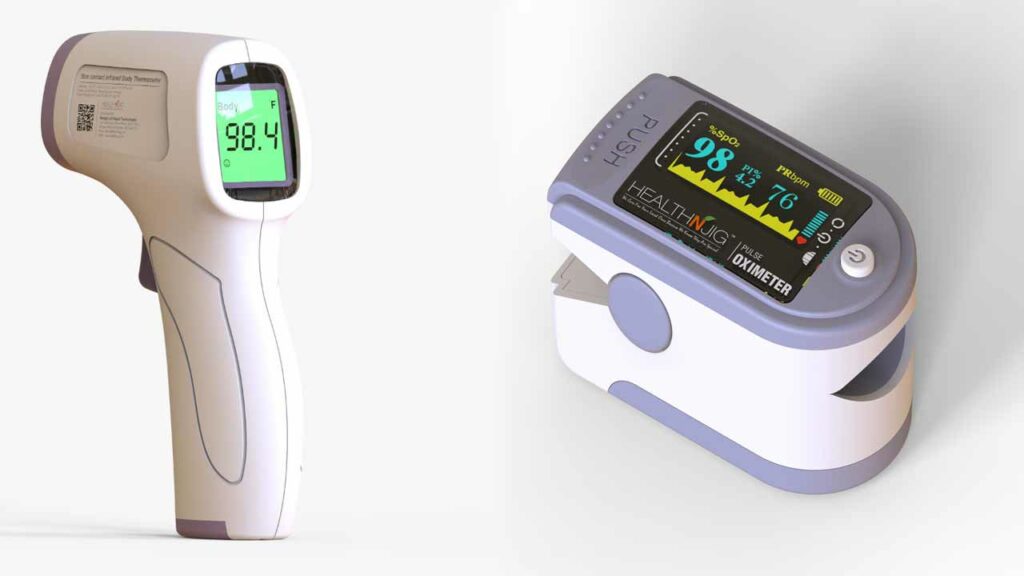The coronavirus is spreading at the fastest pace and this has put almost every person in a dangerous zone. The symptoms of COVID-19 are so common that almost every individual on the planet must have wondered, is this early symptom of coronavirus? An ordinary tickle in the throat, a single dry cough, or a flush of warmth can be the signs of someone getting infected with the sars-cov-2 virus.
Generally, the first step is to consult your doctor and tell him about how you feel, possibly augmented with a couple of readily measurable vital signs like your body temperature. But more and more people across the country are not willing to go to hospitals or care centers unless you need very serious help. But for this, you need to be capable enough of monitoring your condition so that the right decision can be made at right time.
This can be done with the help of two common devices – THERMOMETERS & OXIMETERS that can help someone with suspected or confirmed novel coronavirus to monitor their condition and to guide decision-making.
YOU MAY LIKE TO READ: Can An Oximeter Fight Covid-19 Pandemic?
In diagnosing the symptoms for COVID-19, people need an infrared thermometer to check for low-grade fever and monitor higher fevers. For those recovering from a suspected case, guidelines issued by the government state that you can leave isolation after, “You have had no fever for at least 72 hours (that is three full days of no fever without the use of medicine that reduces fevers).” Both of these require an accurate thermometer to track.
Quarantine helps limit the spread of #COVID19.
Your national health authority may ask you to stay home or at a designated centre for a certain period to help #BreakTheChain of #coronavirus transmission. pic.twitter.com/2tw846MdPT
— World Health Organization Western Pacific (@WHOWPRO) July 20, 2020
The other important thing is to keep tracking your breathing. According to the World Health Organization (WHO), COVID-19 progresses to severe pneumonia when the signs of difficulty breathing noted above are present and a patient’s oxygen saturation, or the amount of oxygen carried by the blood, is equal to or less than 93 percent.
YOU MAY LIKE TO READ: COVID-19: Pulse Oximeter Sales Up
This is a critical measure of illness that should be routinely and constantly monitored. Now, this can be measured easily at home. The device that measures your blood oxygen saturation is called a pulse oximeter and the readings are often referred to as “pulse ox.”
Checking pulse ox at home can reassure a patient feeling tightness in the chest. And knowing that a patient’s pulse ox has been steadily declining can help a doctor know when to recommend that a person goes to a hospital in this crisis.
Both the products are extremely useful for early detection and management of coronavirus and are cost-efficient and easy to use.
YOU MAY LIKE TO READ: COVID-19: NPPA Seeks MRP Of Pulse Oximeter & Oxygen Concentrator To Curb Price Escalation

